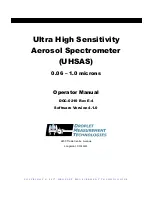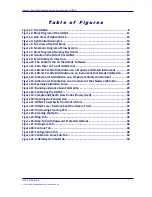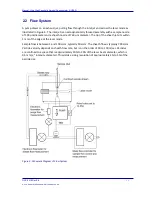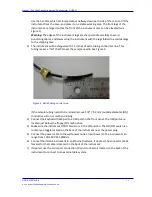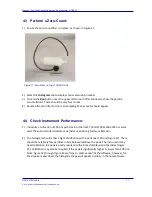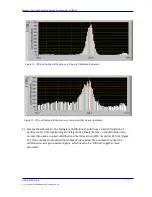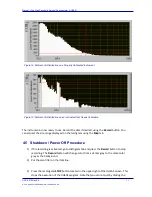
Manual, Ultra High Sensitivity Aerosol Spectrometer (UHSAS)
DOC-0210 Rev E-4
1 2
© 2017 DROPLET MEASUREMENT TECHNOLOGIES
2.1 Optical System
The optical system consists of several parts: the laser and associated components and optics;
the detection system, including collection optics, photodetectors, and reference monitoring;
and the mechanical housing.
2.1.1
The Laser
The laser is a semiconductor-diode-pumped Nd3+:YLF solid-state laser. It operates in the
fundamental (TEM
00
) spatial mode on a 1054 nm laser line with an intra-cavity power of ~1 kW.
The pump laser is a temperature-controlled 1 W single-stripe diode at 800 nm, driven by a
stable current source. The Nd
3+
:YLF laser is a high quality factor optical resonator built around an
Nd
3+
:YLF active laser crystal, pumped end-on by the diode laser. The laser mirrors have
reflectivities near 0.99999 at the lasing wavelength. The laser mode has a 1/e
2
intensity
diameter of 600
µ
m. The standing wave laser mode is perpendicular to the flow of particles; the
light is linearly polarized with the electric field vector parallel to the flow of particles. Particle
scatter is collected in a direction perpendicular to both the particle flow and the laser standing-
wave; see Figure 3 and Figure 5 for side and top views of the optical block.
2.1.2
The Detection System
The detection system consists of two pairs of Mangin collection optics capable of collecting light
over a large solid angle. The Mangins image the space at which the sample flow intersects the
laser mode. The first pair of collection optics, the primary scattering detection system, images
onto an avalanche photodiode (APD) for detecting the smallest particles. The other pair, the
secondary scattering detection system, images onto a low-gain PIN photodiode for detecting
particles in the upper size range of the instrument. The two detection systems are located on
the opposite sides of the optic block (see Figure 5: Top View of Optical Block).
Each detector is amplified in a current-to-voltage stage that feeds into the analog electronics
system. The amplification allows the system to detect particles as small as 55 nm and 1-10
counts/minute at a zero-count rate. At this particle size, the peak scatter rate corresponds to
100 pW of detected light power at the detector. The size sensitivity is limited by several factors,
including a fundamental noise process from the photon-shot noise on the detected molecular
scatter from background gas, and a fundamental noise process from the Johnson noise in the
photodiode transimpedence feedback resistor.
The imaging optics have an acceptance aperture of 23 mm diameter at a distance of 8 mm from
the interaction region. The Mangin reflectors are aluminum coated with reflectivity of 0.9.
In addition to the primary and secondary detection systems, the UHSAS has a reference
detector. This detector serves as a reference for changes in laser power.

